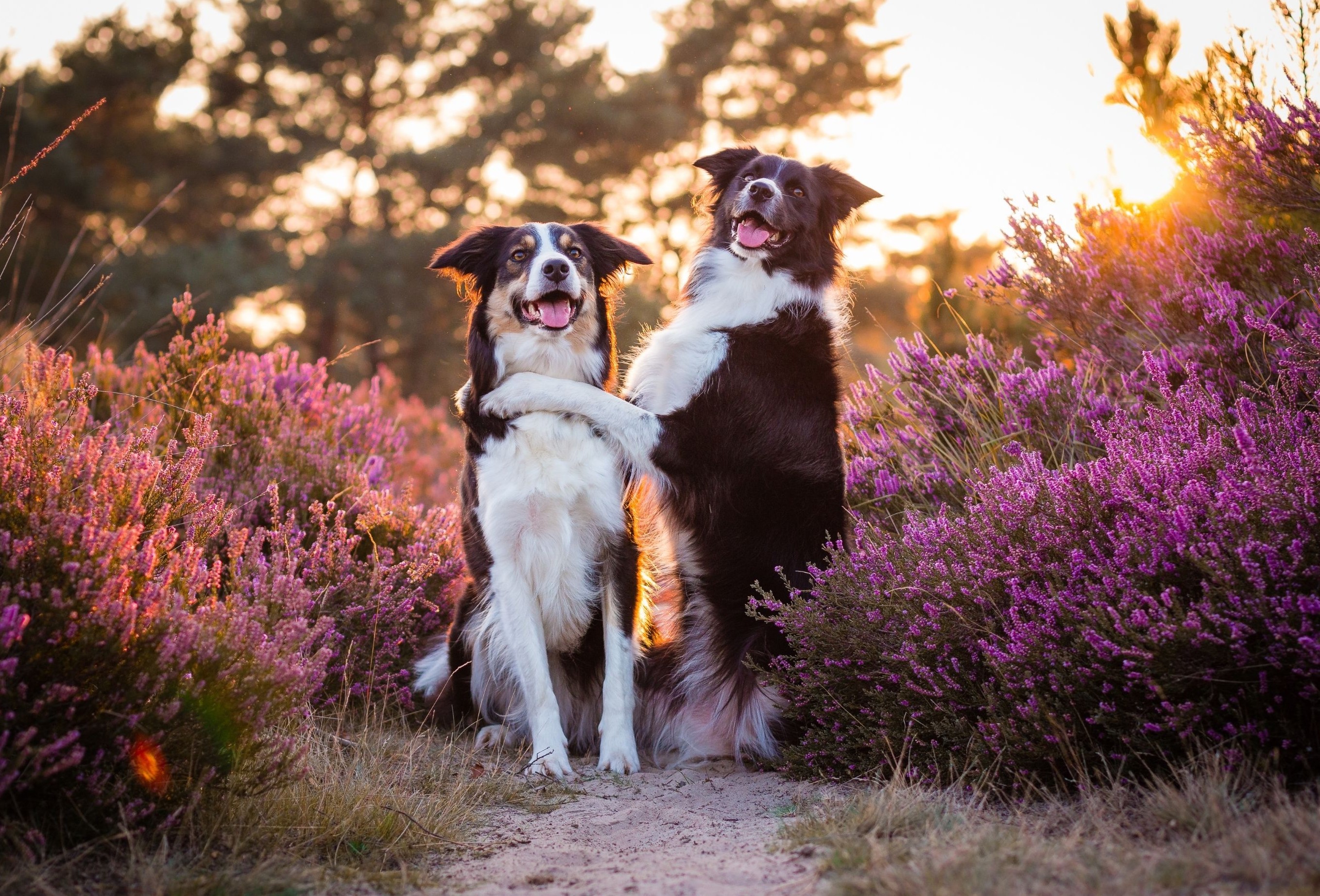Your Cart is Empty
Black Friday | 25% OFF & More!
Black Friday | 25% OFF & More!
Black Friday | 25% OFF & More!

How does it work when you stud your dog? Is it safe? Do I need a contract? If you are new to the world of dog breeding, it’s normal to have a ton of questions. So dive into our beginner's guide to making your dog a stud.
Our guides to dog breeding offer insight into the ethical, financial, and health factors you need to take into account to breed responsibly. So what do you need to know if you’re considering making your dog a stud?
We all think our dogs are the cutest floofs around. But we need to remember that the purpose of all responsible breeding should be to improve the breed. This is probably the most important thing to keep in mind on your dog breeding journey, especially as you work towards making your dog a stud.
So first up, is your dog stud material?
To consider stud work, your dog should be an ideal representation of his breed. But also take into account his personality and general well-being. Ask yourself the following questions:
Breed Standard - does he represent the breed well? Is he free of defects? If you are unsure about this, you could arrange to meet with an experienced breeder or someone knowledgeable of the breed.
Temperament - is he an upstanding member of the canine community? Is he well socialized and friendly? If so, great! He’ll likely pass these traits onto his offspring.
Health - is it safe to stud my dog? Do they have a clean bill of health to breed? Always visit your vet to discuss appropriate tests before embarking on a stud contract.
Registration - is he registered with the kennel club? Ideally, all dogs should be registered when breeding to ensure bloodlines are tracked and breed health maintained.
Prowess - has he shown himself to excel in the show ring? Mushing? Agility? Dog sports? Anything that can show he’s an exemplary breed example will make him a more appealing stud dog.
Fertility - you may want to have his fertility tested, to be sure that any breeding attempts will most likely be successful.
No dog is perfect, and matching with the right bitch is a great way to balance out any ‘flaws’. But by placing breed standards and your dog’s health first, you’ll be starting in the right direction.
Before considering making your dog a stud, it’s important to wait until they have fully sexually matured. For smaller breeds, this can happen at around 8-10 months, but for larger breeds, this won’t be until they are around 2 years of age.
Generally speaking - dogs are the most fertile at around 2 years of age. So it would be wise to wait until this age to stud them.
If you are unsure, check with your vet who can give you advice on your dog’s maturity level, and whether it’s safe to begin the process of stud work.
Once you have all the relevant documentation ready and a clean bill of health tests from your vet - you are ready to start running a stud service operation!
Whether you plan to operate on a professional lesson or as more of a hobby - you must be able to show proper identification and documentation before embarking on any mating.
You can sign your dog up to stud websites, or enquire in your local networks or Kennel Club group for pairings.
Once you find a perfect match you’ll also need to draw up a stud dog contract. This is a document with all the details of how the mating will happen, as well as details about any stud fee or compensation that is included.
Some stud dog owners choose a fee, while others negotiate for the first pick of the litter - if they are looking for a protege or new family member.
The agreement should be mutually accepted and signed by both parties - yourself and the owner of the bitch involved. You can find an example of a contract for stud dog services here.
Once this is ready - you can set a date!
With an inexperienced dog, it's a good idea to have the first pairing with a more experienced bitch. This can help everything go a lot more smoothly - increasing your chances of success.
It’s also wise to have his first breeding experience at home, so see if you can negotiate this with the owner of the bitch to help make him more comfortable.
Whilst you may be nervous about your dog, it is recommended that you only interfere if absolutely necessary. Try and let the dogs interact naturally according to their timing, without trying to speed up the process or force an outcome. Sometimes you’ll need to have a few attempts to succeed.
To help, it's useful to have a relaxed meeting with the bitch beforehand. This way, the two can develop a comfortable rapport before the actual mating meeting.
Don’t forget that if you’re at all worried about the mating itself, you can reach out to an experienced breeder for help. Even if you might have to pay them for their assistance, it’s much better to start your stud journey the right way, instead of risking your dog’s welfare.
For more breeding tips, check out our Guide to Dog Breeding For Beginners.
Sadly, there isn’t any robust research to help us understand any personality changes for male dogs post-breeding. Most changes that occur are seen on more of a case-by-case basis.
Some stud owners have found their dogs become:
Generally more rambunctious and hard to control in some situations.
More aware of females
More likely to wander
Prone to same-sex aggression
Marking more frequently, sometimes indoors
However other owners have noted that their dogs did not change at all. Their dogs are still polite, responsive, and courteous around other dogs. Generally speaking, well-rounded and happy dogs tend to seem unphased by breeding, but this isn’t always the case.
In short, you won't know if there will be any behavior changes until after the breeding, and changes won’t necessarily happen immediately after either. So it’s up to you to weigh these potential pros and cons of breeding your male dog.
Retiring your stud dog is a decision that should be reached between you and your vet. You’ll want to take into account:
Fertility - conception rates will drop as your dog naturally becomes less fertile with age.
Breed - smaller breeds will usually lose most of their fertility at around 7 years of age, whereas older breeds usually retire at around 10 years of age.
Wellbeing - it’s important to make sure your dog is injury and pain-free before breeding, especially if they have any joint issues that might make the process painful for them.
We hope you found this guide to making your dog a stud helpful! Has it made you think about whether running a stud service is right for you and your dog?
Whatever your decision, your dog’s well-being and the well-being of their future potential offspring rely on breeders like you making sound choices, with advice from their vet. So be sure to work closely with them to create a stud service to be proud of. Good luck!
See How Dog Owners Are Using These Leak-Free Potty Pads to Keep Their Homes Clean and Pups Happy
4.7 ⭐⭐⭐⭐⭐
Over 100,000 Dog Owners Saved Money With Potty Buddy™
The washable pee pads that absorb anything your dog throws at them, while keeping your floors and furniture stain-free.
✅ Super Absorbent and Leak-Proof
✅ Great for Potty Training
✅ Ideal for Puppies and Older Dogs
✅ Washable and Reusable For Years
✅ Save over $400/year by not buying disposables
-60 Day Money Back Guarantee-

⭐⭐⭐⭐⭐
-Diana D.
These pads are a life saver for my kitchen floor and bedroom carpet! Just ordered 2 more!




Check Out Our Most Popular Content